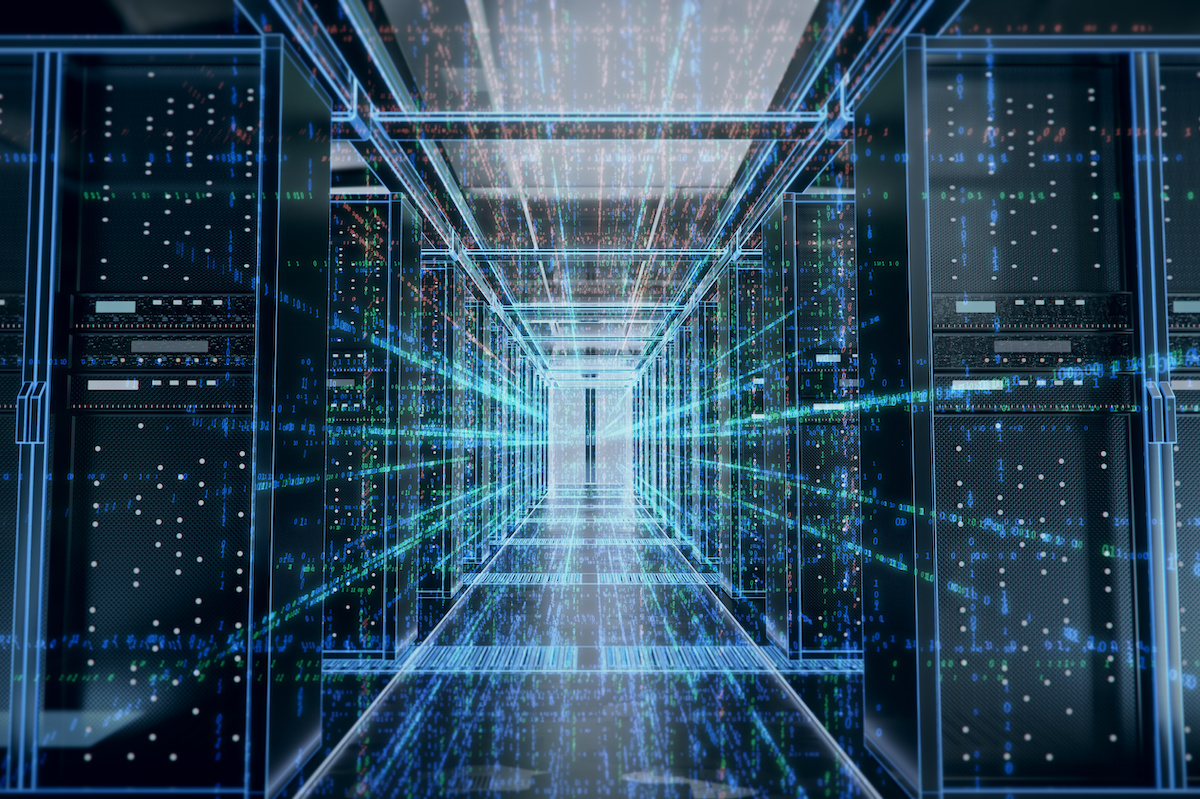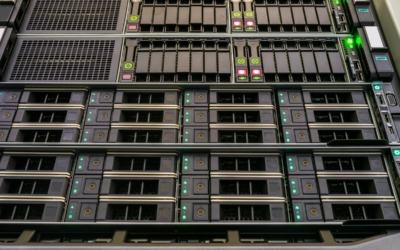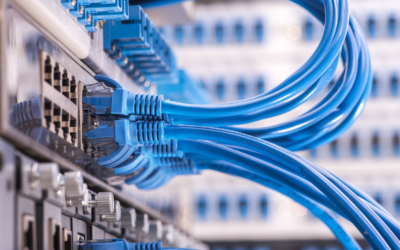How the Perception of DCIM Has Changed Over the Years – Part 220 min read

Welcome back, everyone! We last left off discussing a bunch of challenges and scratched the surface of how modern DCIM solutions can impact new data center management and operations issues. Let’s pick it up from there.
To overcome many of the challenges we discussed earlier, working with a DCIM architecture that integrates with more of your data center ecosystem is essential. What does that mean?
Five key attributes define some of the most advanced DCIM platforms optimized for hybrid IT environments. Yes, I know that there are probably way more than five. But, these attributes differentiate modern DCIM from traditional DCIM systems designed for a single or small number of large data centers. Adopting a platform based on the features below will put you on the path of benefiting from newer, evolving technologies such as machine learning and predictive analytics. And it’ll help you become more secure.
Let’s explore these five attributes:
1. Modern DCIM can leverage cloud technologies for ease of implementation, scalability, analytics, and maintenance. Don’t get scared off by this! I am NOT telling you to offload your entire DCIM into the cloud. However, by hosting the DCIM server in the cloud, deployment is more straightforward and faster by eliminating the need to procure a new server for every site. Next-generation DCIM typically installs as a simple gateway app on an existing server (physical or virtual). On that note, you can have a hybrid deployment with data localization and the opportunity to leverage the cloud. Remember, there are many benefits to working with cloud computing and DCIM. You start to see these positive outcomes when you leverage data-driven features alongside DCIM, which brings us to the next point.
2. Modern DCIM can connect to a data lake, enabling insight and event prediction with artificial intelligence (AI). With me so far? You don’t have to commit to transferring everything into the cloud. But it would be silly to at least not look at the benefits that cloud computing offers as it relates to working with critical data. Modern DCIM solutions allow you to connect to a data lake or a secure repository of massive amounts of anonymized device data. From there, big data analytics and machine learning algorithms can be developed and trained on this data to yield insights. Data from DCIM can also make predictions that improve reliability and efficiency. Ingested DCIM data can also reduce operating expenses. For example, DCIM data in a data lake can help you predict when UPS batteries will fail – allowing for early planning and budgeting for service replacements. Or, the solution can offer real-time optimization of cooling system controls based on changing climate and load conditions, thus reducing operating expenses.
3. Modern DCIM will leverage mobile and web technologies. And it will integrate with 3rd party platforms. First, your DCIM solution can’t be an island, and you must have an open platform that integrates with 3rd party services. Open APIs enable DCIM data to be shared with any trusted vendor or partner. For example, integration into your MSP’s remote monitoring and management (RMM) tool means they can now manage and service your physical infrastructure equipment for you, just as they might be for your IT applications.
Second, mobile and web capabilities mitigate the challenge of having many unstaffed sites. For example, mobile access could help remote IT staff guide untrained, on-site personnel to troubleshoot and resolve issues without dispatching service. Mobile access and 3rd party integration are essential aspects of a modern DCIM solution. Be sure to look for these.
4. Modern DCIM makes management easier by prioritizing simplicity and intuitive user experiences in its design. Remember what we talked about in part one of this mini-blog series? A recent Uptime Institute study points out that more than 70% of all data center outages are caused by human error, not by a fault in the infrastructure design. Our data centers and what they’re supporting are far more complicated than before. And they’re supporting systems that are much more critical too. Modern DCIM tools don’t, and shouldn’t, be able to do everything under the sun regarding data center management. I’ve seen DCIM vendors fall off the industry map when they tried to do too much and became entirely too complex to manage. Today’s DCIM tools are much more intuitive, and they have to be to support complex critical systems. Further, these tools integrate much more quickly with the cloud, 3rd party solutions, and more.
How do you know if a DCIM solution is intuitive in design and easier to manage for the user? Easy… try it out. Unlike in the past, testing a DCIM solution is much easier. Here’s a good rule. If the solution is easy to demo, deploy, and test by the end user, it most likely has a good design and prioritizes simplicity. If it’s hard even to get a demo up and to run, you’ll have problems in production.
5. Modern DCIM solutions must be a security compliance tool to identify and eliminate potential cybersecurity threats. I don’t care how many times you have to read that. Make sure it sticks. Modern DCIM platforms are no longer point-in-time data center management solutions. We’ve already discussed their use as predictive and prescriptive engines. DCIM is also a security tool. At a recent Oracle conference, we learned that over 80% of breaches happen against systems where a critical update was available. Malicious actors do not lack opportunities to strike. So, please don’t give them an opening. These bad actors will look for misconfigurations, outdated gear, and unpatched equipment. This will include connected PDUs, cooling systems, UPS devices, and anything else that now has an IP address. The security attribute is probably one of the most important and overlooked features of a DCIM platform. This is because many administrators focus more on functionality than core features that help protect and enable the rest of the data center. Remember, DCIM has merged into many more IT functions. Modern DCIM can see beyond data center infrastructure, building, and managing utilities. DCIM has visibility into IT hardware, hypervisors, virtual machines, applications, the cloud, and your business. Bottom line, leverage security functions in your DCIM toolset.
Thanks for hanging out with me for this long. But, before we go, I want to bring up one more point. Let’s call it a bonus attribute…
DCIM and sustainability
Today, over 40 countries now require greenhouse gas (GHG) emissions reporting. And this is expected to increase in the coming years. What began focusing on only the most significant polluters is quickly expanding to include smaller companies and organizations. Governments increasingly force corporate transparency on environmental, social, and governance (ESG) performance through mandatory reporting. In the EU, for example, the Commission adopted a proposed Corporate Sustainability Reporting Directive which requires all listed companies, banks, insurance companies, and all those deemed by authorities as a “public-interest entity” to now report on ESG metrics and be subject to audits. Government mandates typically mean penalties for non-compliance. So, this non-financial reporting requires high accuracy and must be defensible in case of audits or legal challenges.
Aside from the fact that going green is good for business and the environment, DCIM is a relatively new entrant into the ESG management space. However, modern DCIM tools take ESG seriously and offer deeper visibility into your carbon footprint. Be sure to look for a platform to help you lessen your carbon footprint and improve your ESG standing.
Final thoughts: The perception of DCIM
At the upcoming AFCOM Data Center World event, we’ll be holding our DCIM Workshop. This year we’ll focus on advanced functions, augmented reality, and even the operation and use of data lakes. The significant point will be to see the larger picture around DCIM and help leaders in the digital infrastructure space understand how DCIM has changed. There are many new metrics and requirements, and we’ll see more focus on water, renewable energy, infrastructure security, and much more. The perfection of DCIM is that it’s gone from a day-to-day tool to becoming a critical part of business and technology operations. The tools you use to manage your critical infrastructure must reflect these changes and these new perceptions.
Real-time monitoring, data-driven optimization.
Immersive software, innovative sensors and expert thermal services to monitor,
manage, and maximize the power and cooling infrastructure for critical
data center environments.
Real-time monitoring, data-driven optimization.
Immersive software, innovative sensors and expert thermal services to monitor, manage, and maximize the power and cooling infrastructure for critical data center environments.

Bill Kleyman
Industry Analyst | Board Advisory Member | Writer/Blogger/Speaker | Contributing Editor | Executive | Millennial
Bill Kleyman is an award-winning data center, cloud, and digital infrastructure leader. He was ranked globally by an Onalytica Study as one of the leading executives in cloud computing and data security. He has spent more than 15 years specializing in the cybersecurity, virtualization, cloud, and data center industry. As an award-winning technologist, his most recent efforts with the Infrastructure Masons were recognized when he received the 2020 IM100 Award and the 2021 iMasons Education Champion Award for his work with numerous HBCUs and for helping diversify the digital infrastructure talent pool.
As an industry analyst, speaker, and author, Bill helps the digital infrastructure teams develop new ways to impact data center design, cloud architecture, security models (both physical and software), and how to work with new and emerging technologies.







0 Comments